Yoga Blog
Evening Relaxation Yoga: Gentle Flow to Unwind and Prepare for Restful Sleep
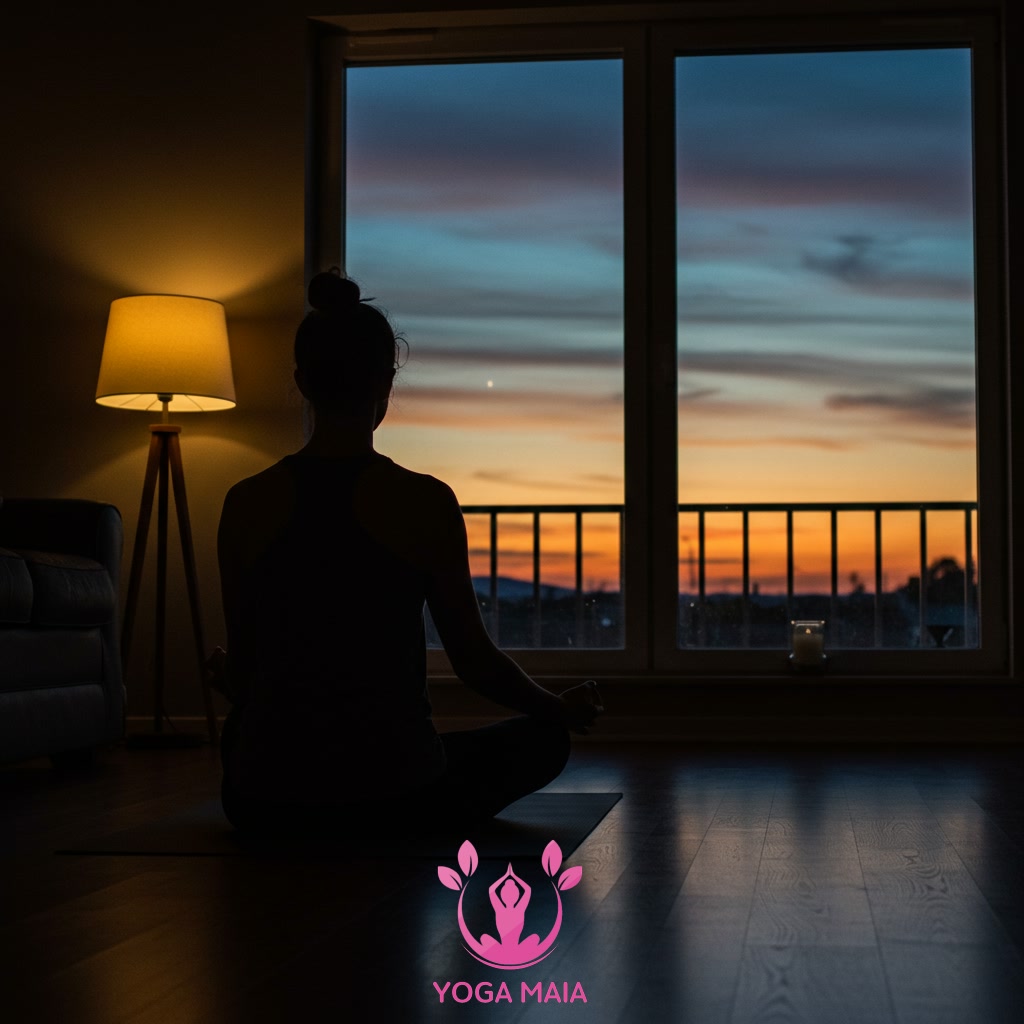
This session focuses on Evening Relaxation Yoga, presenting a gentle flow designed to help participants unwind after the day. It provides a calm and soothing yoga practice intended to release tension and prepare the body and mind for a restful night’s sleep. The sequence emphasizes slow movements and breath awareness, promoting deep relaxation. Engaging in this yoga routine can contribute to improved sleep quality and overall well-being before bedtime.
Table of Contents
- Section 1: Introduction: Why Evening Yoga for Relaxation and Sleep?
- Section 2: Setting the Mood: Creating a Peaceful Space and Mindset
- Section 3: Gentle Warm-up and Mindful Breathing (Pranayama)
- Section 4: The Gentle Flow: Calming Poses (Asanas) for Unwinding
- Section 5: Holding and Releasing: Deeper Stretches for Tension Release
- Section 6: Cool Down and Final Relaxation (Savasana)
- Section 7: Transition to Rest: Post-Yoga Tips for a Restful Night
Section 1: Introduction: Why Evening Yoga for Relaxation and Sleep?
As the day winds down, our bodies and minds often carry accumulated tension and stress. Evening yoga offers a powerful pathway to release these burdens, shifting our focus inward and preparing us for a restful night. Unlike more dynamic morning practices, evening yoga emphasizes gentle movements, deep stretching, and mindful breathing, specifically designed to calm the nervous system. Engaging in this practice before bed signals to your body that it’s time to transition from the day’s activities to a state of relaxation and repair. This deliberate unwinding process not only helps alleviate physical stiffness but also quiets mental chatter, making it significantly easier to fall asleep and experience deeper, more restorative rest. It’s a conscious choice to prioritize well-being and set the stage for peaceful slumber.
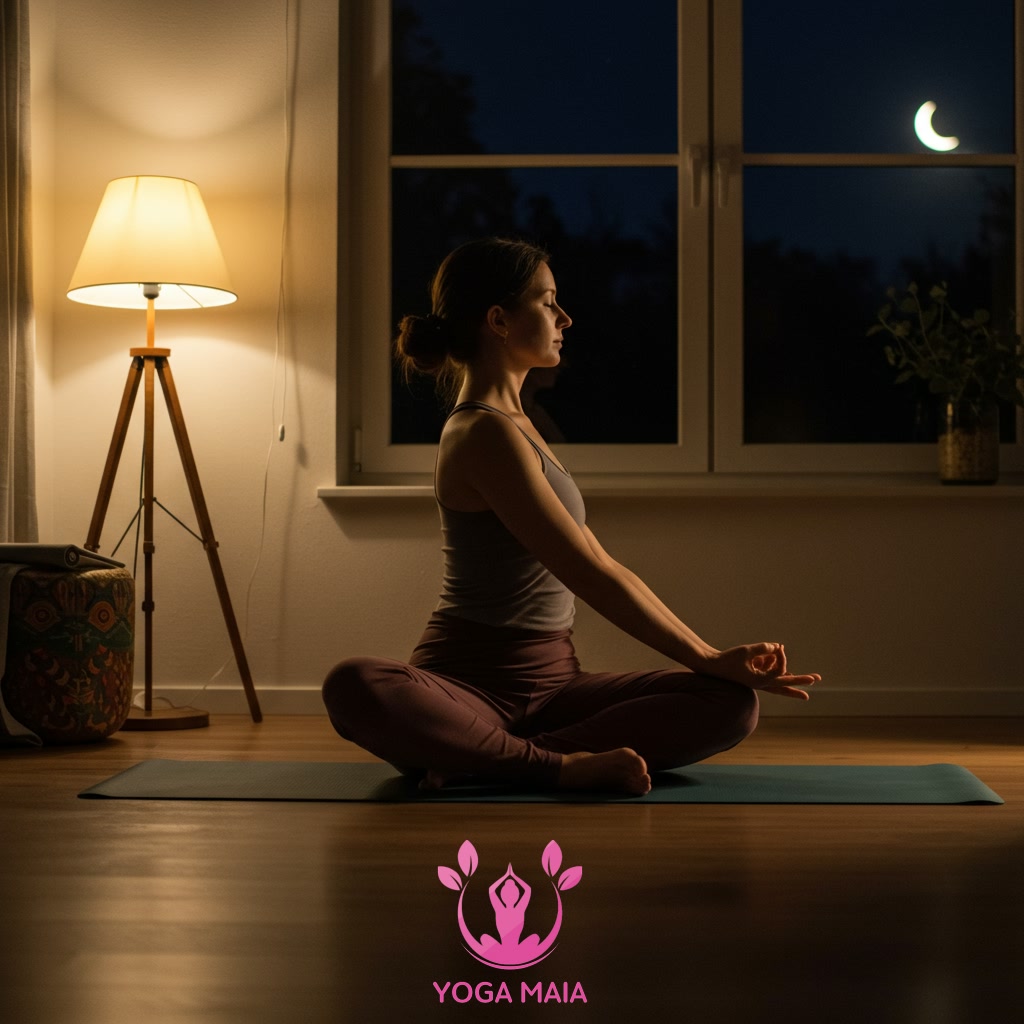 Introduction: Why Evening Yoga for Relaxation and Sleep?
Introduction: Why Evening Yoga for Relaxation and Sleep?
Section 2: Setting the Mood: Creating a Peaceful Space and Mindset
Following the release of tension, the first step towards deep relaxation is cultivating the right environment and internal state. Begin by designating a quiet corner in your home where you won’t be disturbed. Dim the lights, perhaps using soft lamps or even candlelight, to create a warm, soothing atmosphere. Ensure the space is tidy and comfortable, laying out your yoga mat or a soft blanket. Equally important is the mental preparation: take a few moments to consciously leave the day’s worries behind. Close your eyes, take a deep breath, and set an intention to be present and receptive to the gentle flow that follows, allowing yourself permission to fully unwind.
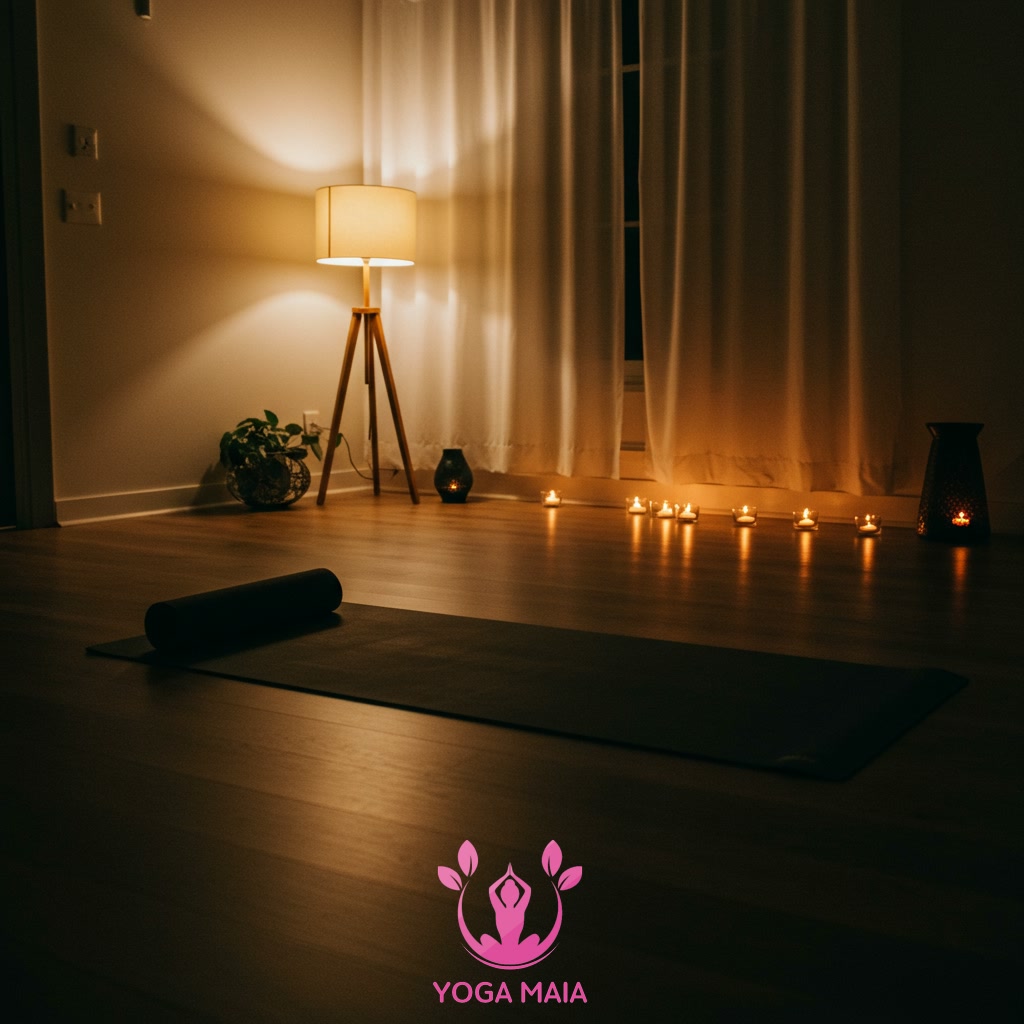 Setting the Mood: Creating a Peaceful Space and Mindset
Setting the Mood: Creating a Peaceful Space and Mindset
Section 3: Gentle Warm-up and Mindful Breathing (Pranayama)
After finding your quiet space and settling in, we begin by gently awakening the body and calming the mind. This involves a brief, easy warm-up sequence designed to release any surface tension and prepare your muscles and joints for the gentle flow ahead. Focus on slow, deliberate movements, listening to your body’s signals. Following this physical preparation, we transition into mindful breathing, or Pranayama. This is a crucial step in grounding yourself and shifting your focus inward. Simply observe the natural rhythm of your breath – the gentle rise and fall of your chest or abdomen. Don’t try to change it, just notice it. Bringing awareness to your breath helps to quiet the mental chatter and anchors you in the present moment, setting a peaceful foundation for the rest of your practice.
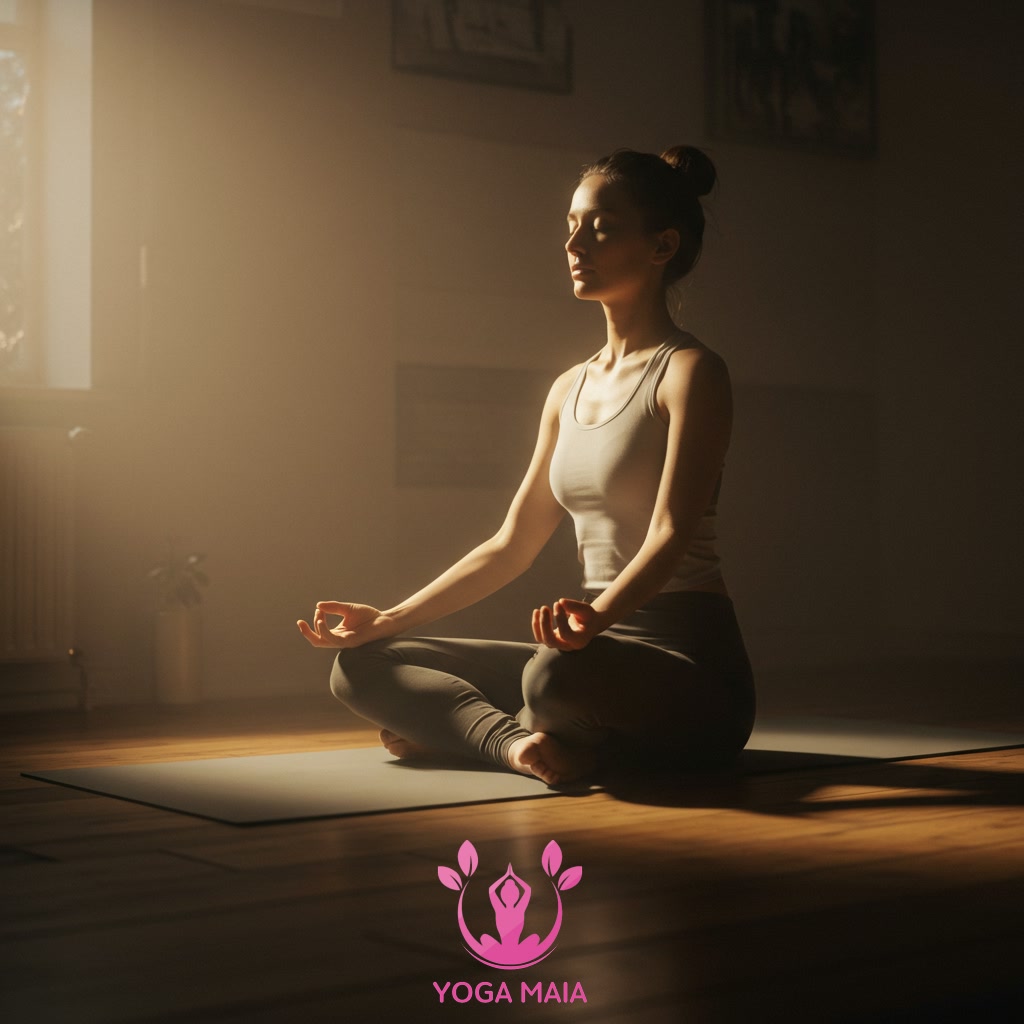 Gentle Warm-up and Mindful Breathing (Pranayama)
Gentle Warm-up and Mindful Breathing (Pranayama)
Section 4: The Gentle Flow: Calming Poses (Asanas) for Unwinding
Following our initial gentle warm-up, we now transition into the core of our practice: a series of calming postures, or asanas, specifically chosen to help you deeply unwind. This sequence is designed to soothe your nervous system and release accumulated tension from your body, preparing you for a night of restful sleep. We will move slowly and mindfully through poses like Child’s Pose, which offers deep relaxation and comfort, and gentle twists, which help to release stiffness in the spine. Focus on your breath as you hold each pose, allowing it to guide you deeper into relaxation. These asanas are not about stretching to your maximum capacity, but rather finding ease and surrender in the shapes, encouraging your muscles to soften and your mind to quiet down.
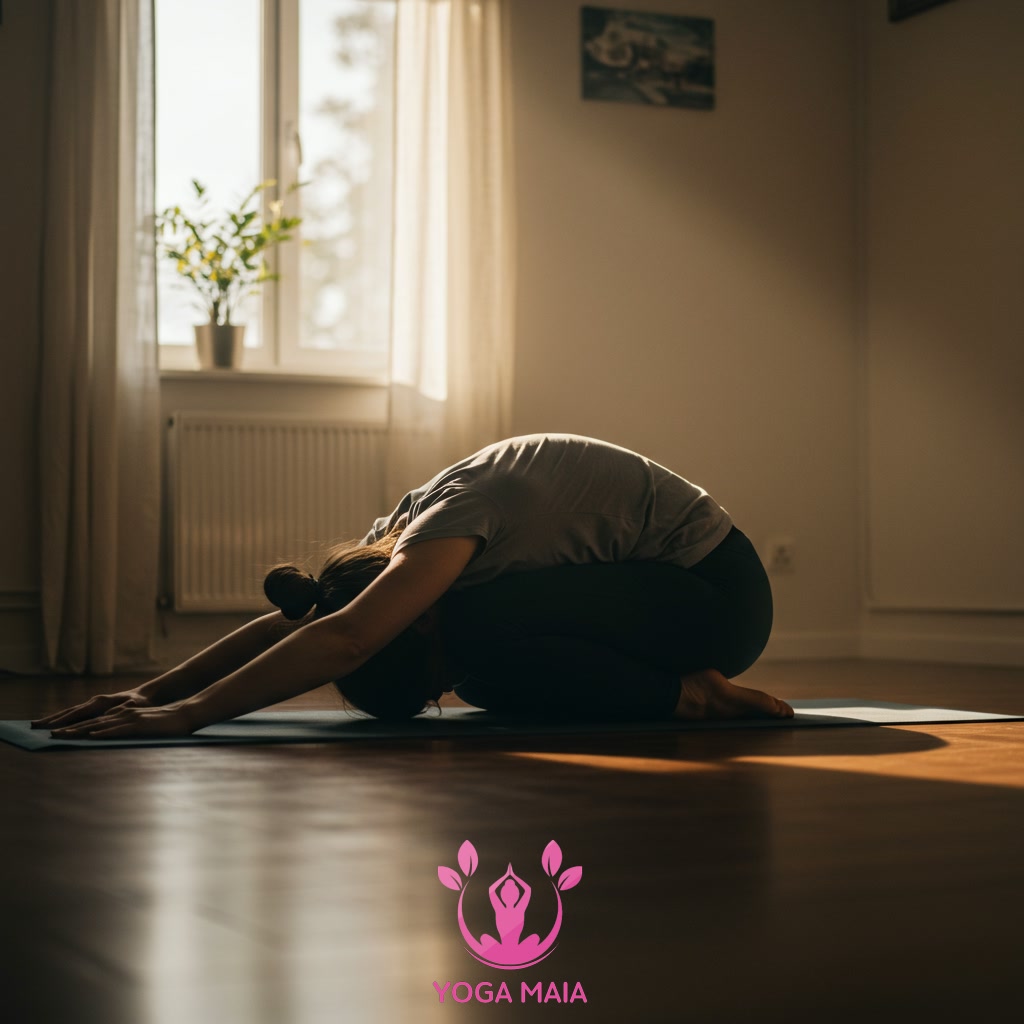 The Gentle Flow: Calming Poses (Asanas) for Unwinding
The Gentle Flow: Calming Poses (Asanas) for Unwinding
Section 5: Holding and Releasing: Deeper Stretches for Tension Release
Moving beyond the foundational calming postures, this section guides you into deeper stretches specifically designed to target areas where tension often accumulates, such as the hips, hamstrings, and shoulders. The focus here is on the principle of ‘holding and releasing.’ By gently holding a stretch for a slightly longer duration, you allow your muscles time to soften and surrender, rather than resist. Pay close attention to your breath, using each exhale as an opportunity to consciously invite release and let go of any physical or mental tightness you may be holding onto. These sustained stretches encourage a profound unwinding, preparing your body for a state of deep rest.
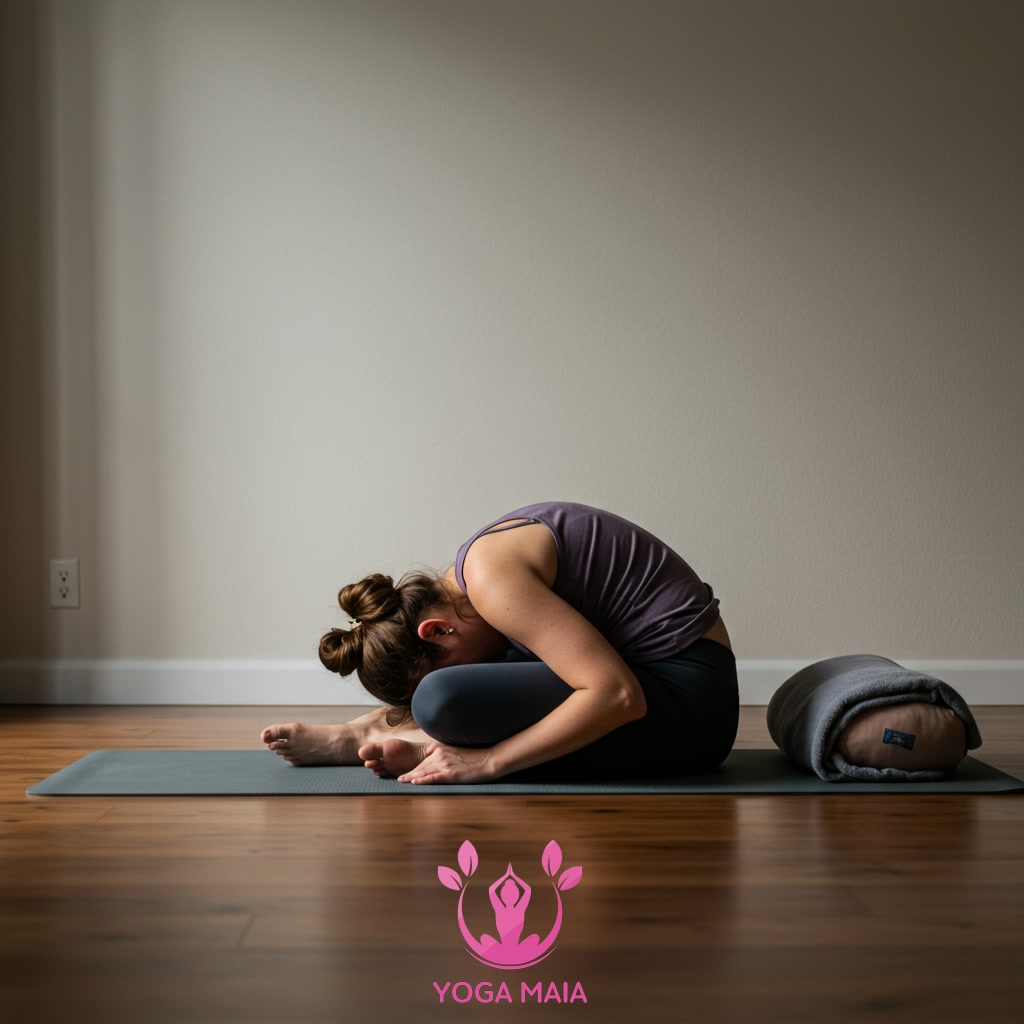 Holding and Releasing: Deeper Stretches for Tension Release
Holding and Releasing: Deeper Stretches for Tension Release
Section 6: Cool Down and Final Relaxation (Savasana)
Transitioning from the gentle stretches, this final section guides you into a state of complete rest and integration. The cool-down phase might involve just a few simple, slow movements to release any last traces of tension, perhaps a gentle twist or bringing your knees to your chest before settling down. The culmination of the practice is Savasana, or Corpse Pose. This is where you lie flat on your back, allowing your entire body to become heavy and fully supported by the earth beneath you. In Savasana, the intention is to consciously release all effort, softening every muscle and allowing your breath to become naturally calm and quiet. This pose is vital for the body and mind to absorb the benefits of the yoga practice and prepares you for a peaceful transition into sleep, fostering deep relaxation and stillness.
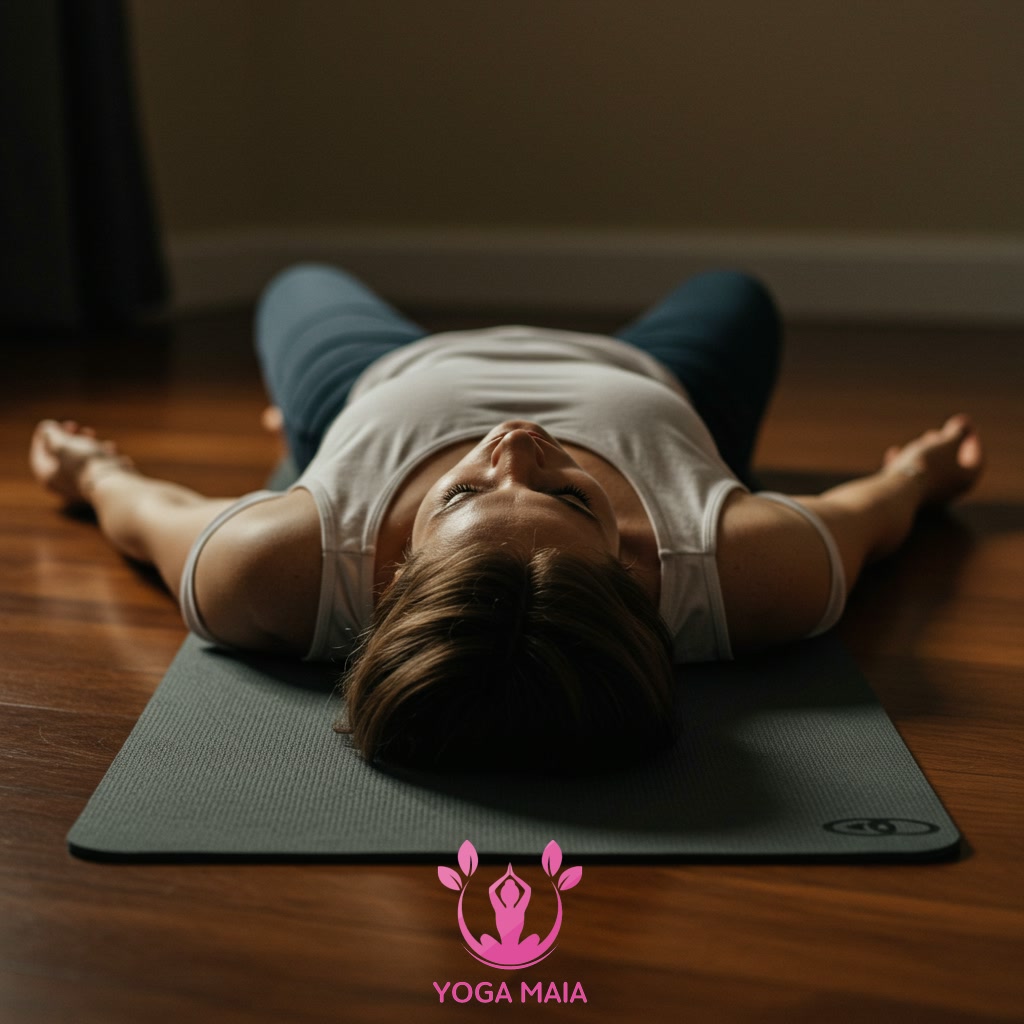 Cool Down and Final Relaxation (Savasana)
Cool Down and Final Relaxation (Savasana)
Section 7: Transition to Rest: Post-Yoga Tips for a Restful Night
Following the gentle cool-down phase of your evening yoga practice, the transition to rest is paramount for maximizing the benefits of relaxation and preparing for sleep. This isn’t just about finishing the poses; it’s about consciously carrying the sense of calm and stillness cultivated on the mat into the rest of your evening. After your final resting pose, take a few moments to simply lie still, allowing the body and mind to fully integrate the practice. Avoid rushing up or immediately engaging with stimulating activities like screens or demanding tasks. Instead, embrace the tranquility. Consider dimming the lights further, perhaps putting on comfortable sleepwear, and engaging in quiet activities such as reading a physical book, listening to soft music, or simply sitting in comfortable silence before heading to bed. This mindful transition helps signal to your nervous system that it’s time to wind down completely, paving the way for deeper, more restorative sleep.
 Transition to Rest: Post-Yoga Tips for a Restful Night
Transition to Rest: Post-Yoga Tips for a Restful Night












